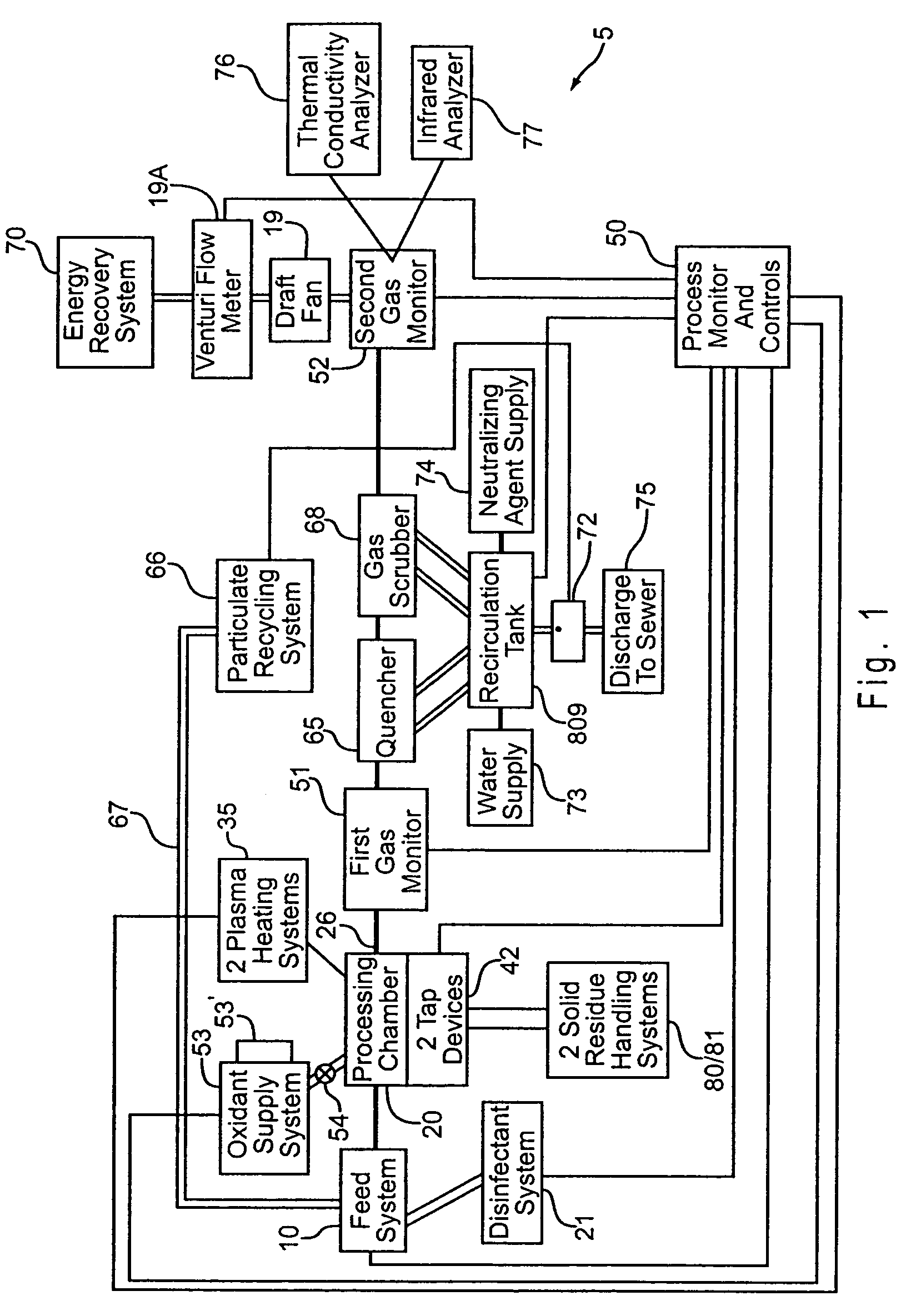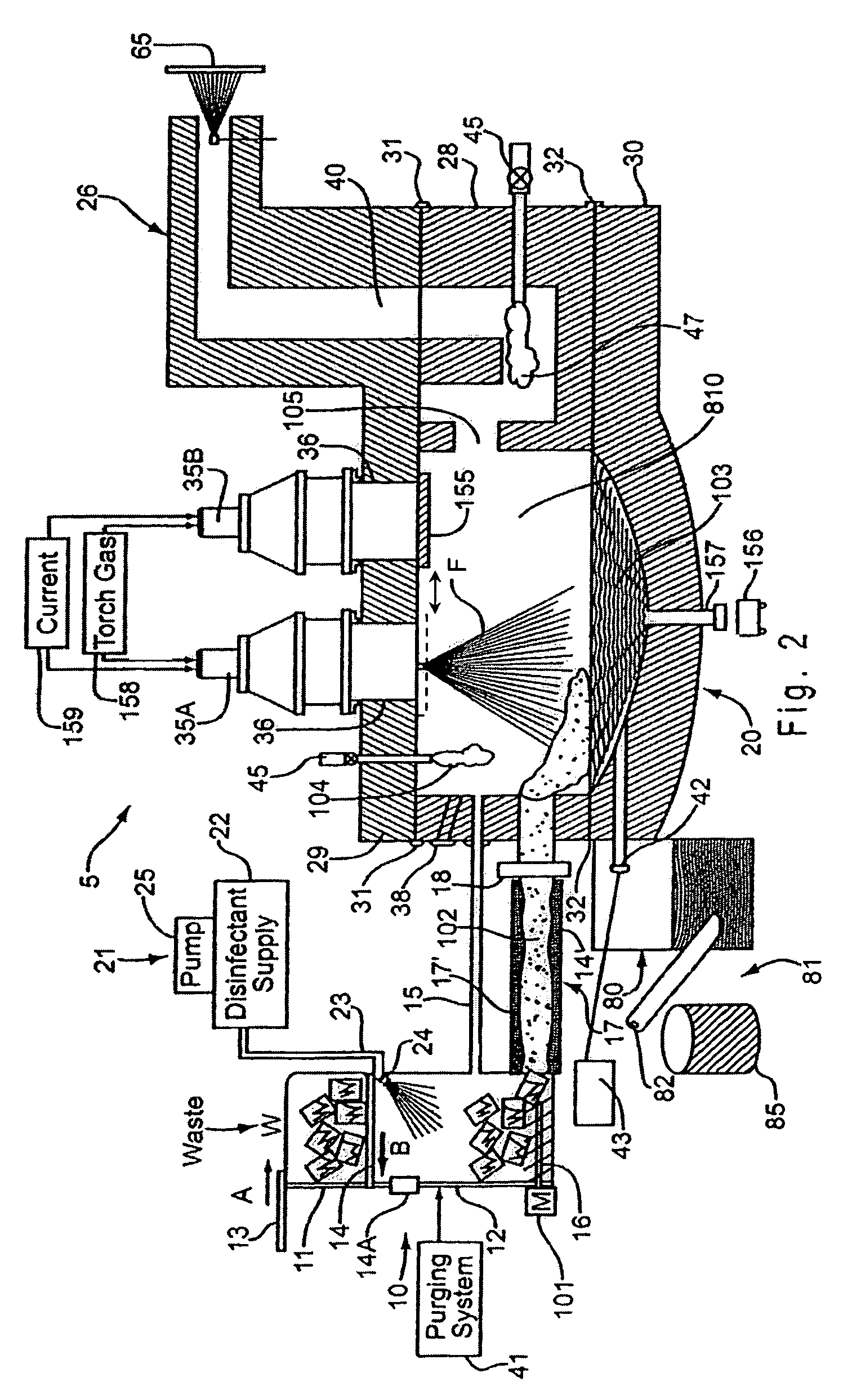Apparatus for treating liquid waste
a technology for liquid waste and apparatus, applied in lighting and heating apparatus, combustion types, furnaces, etc., can solve problems such as general inadequateness, heterogeneity of waste materials, and substantial problems in incinerators
- Summary
- Abstract
- Description
- Claims
- Application Information
AI Technical Summary
Benefits of technology
Problems solved by technology
Method used
Image
Examples
Embodiment Construction
[0018]With reference to the figures, a waste processing system 5 is described hereinafter in detail. The waste processing system 5 may be used to treat any type of product that may be decomposed upon the application of energy. For example, it may be used to treat municipal solid waste, medical waste, thermal batteries, fly and bottom ash, and military waste, including weapon components. The waste processing system 5 may also be used to treat other waste such as PCB-contaminated materials, industrial and laboratory solvents, organic and inorganic chemicals, pesticides, organo-chlorides, refinery waste, office waste, cafeteria waste, facilities maintenance waste such as wooden pallets, oils, grease, discarded light fixtures, yard waste, wastewater sludge, and pharmaceutical waste. The waste product, furthermore, may include organic and inorganic components and may be in the form of solid and / or liquid material.
[0019]For ease of reference, the figures and description sometimes refer to...
PUM
| Property | Measurement | Unit |
|---|---|---|
| temperature | aaaaa | aaaaa |
| temperature | aaaaa | aaaaa |
| temperatures | aaaaa | aaaaa |
Abstract
Description
Claims
Application Information
 Login to View More
Login to View More - R&D
- Intellectual Property
- Life Sciences
- Materials
- Tech Scout
- Unparalleled Data Quality
- Higher Quality Content
- 60% Fewer Hallucinations
Browse by: Latest US Patents, China's latest patents, Technical Efficacy Thesaurus, Application Domain, Technology Topic, Popular Technical Reports.
© 2025 PatSnap. All rights reserved.Legal|Privacy policy|Modern Slavery Act Transparency Statement|Sitemap|About US| Contact US: help@patsnap.com



